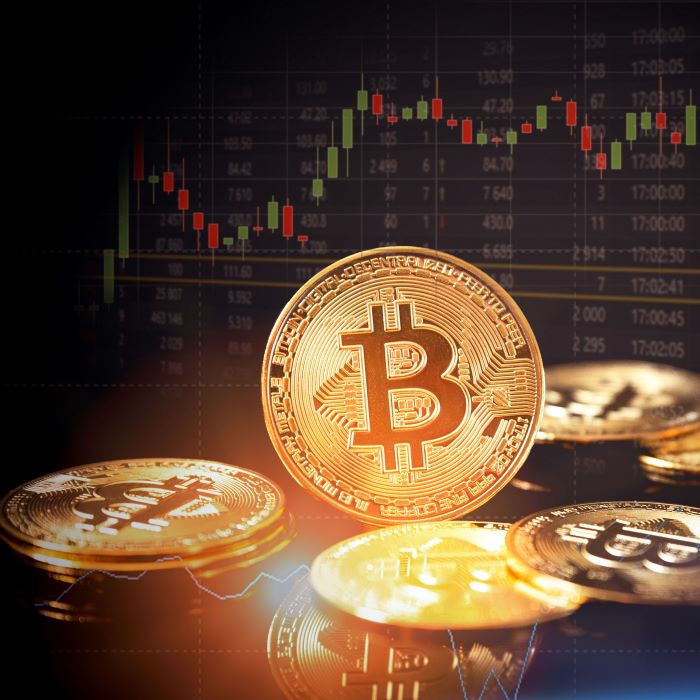Bitcoin, Altcoins & Blockchains: Where Do You Even Begin?
You’ve seen the headlines. Maybe your cousin made a few hundred euros. Your coworker casually brings up “staking” and “airdrops.” And meanwhile, crypto still feels… confusing. Maybe even risky.
But here’s the truth: it doesn’t have to be overwhelming. You don’t need to be a tech expert or have thousands to invest. What you do need is a calm, clear starting point—and that’s what this guide is for.
Let’s break it down step by step.
What Is Crypto, Really?
At its core, cryptocurrency is digital money that’s not controlled by banks or governments. Instead, it’s powered by something called blockchain—a type of secure, public database that no single person or company owns.
In simple terms: it’s money built for the internet.
Some of the most well-known cryptocurrencies include:
- Bitcoin (BTC): The original digital currency, often compared to gold
- Ethereum (ETH): A network where you can build apps and run digital contracts
- Solana, Cardano, Avalanche: Faster, newer networks with unique features
- Stablecoins (like USDC or USDT): Coins tied to traditional currencies like the dollar or euro
If you’ve ever wondered what all the buzz is about—this is the foundation. Crypto is aiming to become the future of how we store, move, and use money.
How to Buy Crypto (Without the Stress)
You don’t need to mine Bitcoin or write code. Getting started is much simpler today than it was even a few years ago. Here’s how:
1. Choose a trusted exchange
An exchange is a platform where you can buy, sell, and hold crypto. Some beginner-friendly options include:
- Coinbase
- Binance
- Kraken
- Bit2Me (great for users in Spain)
Apps like Revolut, Bitpanda, or Crypto.com are also easy entry points for small amounts.
2. Verify your identity
Yes, you’ll need to upload ID. Real, regulated exchanges follow local laws to protect users. Be cautious with any platform that doesn’t ask for verification.
3. Buy your first coins
Start small—€20 to €50 in Bitcoin or Ethereum is enough to get familiar with the process. You don’t need to buy a whole coin.
Do You Need a Wallet?
Exchanges will hold your coins by default, but for extra security, many people choose to transfer their crypto to a wallet.
- Hot wallets (online): Apps like MetaMask or Trust Wallet. Easy to use.
- Cold wallets (offline): Devices like Ledger or Trezor. Best for larger amounts or long-term holding.
The key idea: if the exchange disappears or gets hacked, your own wallet keeps you in control.
Avoid These 5 Common Beginner Mistakes
- Investing more than you can afford to lose
Crypto is exciting, but also unpredictable. Start slow. - Falling for hype or unrealistic returns
If someone promises guaranteed profits—walk away. Scams are still common. - Ignoring fees
Some platforms charge more than they seem to. Check before confirming a purchase or transfer. - Forgetting about taxes
In many countries, crypto earnings are taxable. It’s something to understand early on. - Leaving everything on one platform
Diversify where you hold your coins. And if you’re in for the long haul, consider moving them to a private wallet.
What Can You Actually Do With Crypto?
There’s more to crypto than just buying and holding. Depending on your interest, you can:
- Earn passive income through staking or lending coins
- Buy NFTs, digital art, or access to online communities
- Send money internationally with low fees and fast transactions
- Use crypto debit cards for everyday spending
- Trade on markets—but this takes experience, so proceed carefully
What’s Changing in 2025?
Crypto continues to evolve. Here’s what’s shaping the landscape right now:
- Bitcoin ETFs are making crypto more accessible to traditional investors
- Stronger regulation is creating more safety—and clarity—for everyday users
- Real-world adoption is growing, from retail payments to real estate transactions
- AI and blockchain integration is becoming a hot trend for automation and secure data handling
The big idea: crypto is no longer on the fringe. It’s slowly becoming part of the mainstream financial world.
A Smarter Way to Start
You don’t need to go all in. You don’t need to become an expert overnight. What matters most is to start with intention.
Here’s a simple plan:
- Buy a small amount from a trusted exchange
- Store it safely (and understand where it is)
- Learn slowly—read articles, watch trustworthy tutorials
- Ignore hype and focus on what you actually understand
You’re not late. You’re early to a technology that’s still growing and taking shape. Whether you invest €20 or €2,000, your learning curve starts the moment you take that first step.
And that first step? It’s always the most powerful one.



